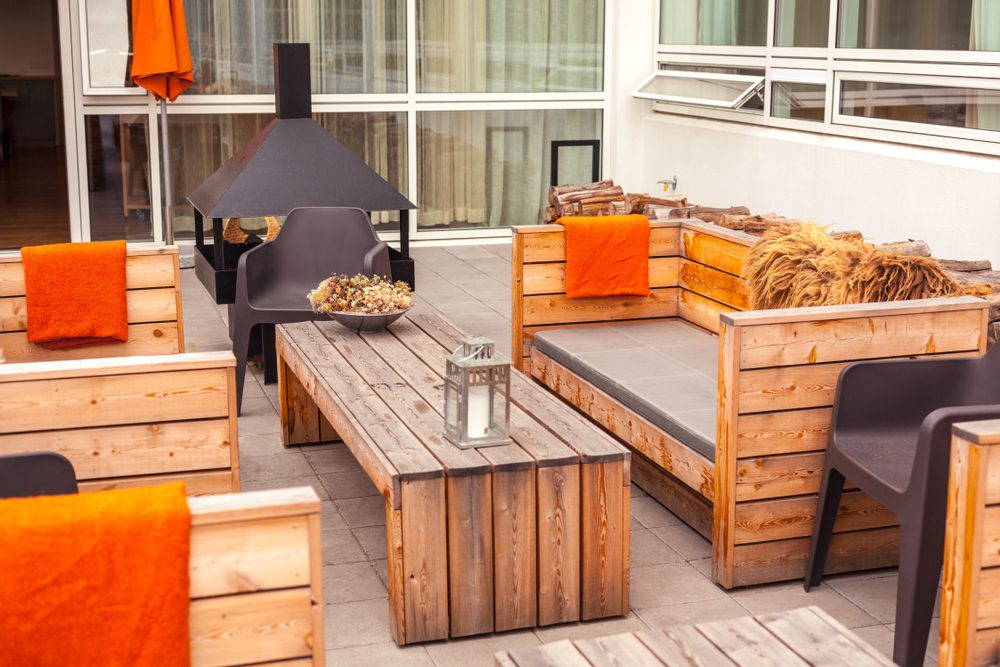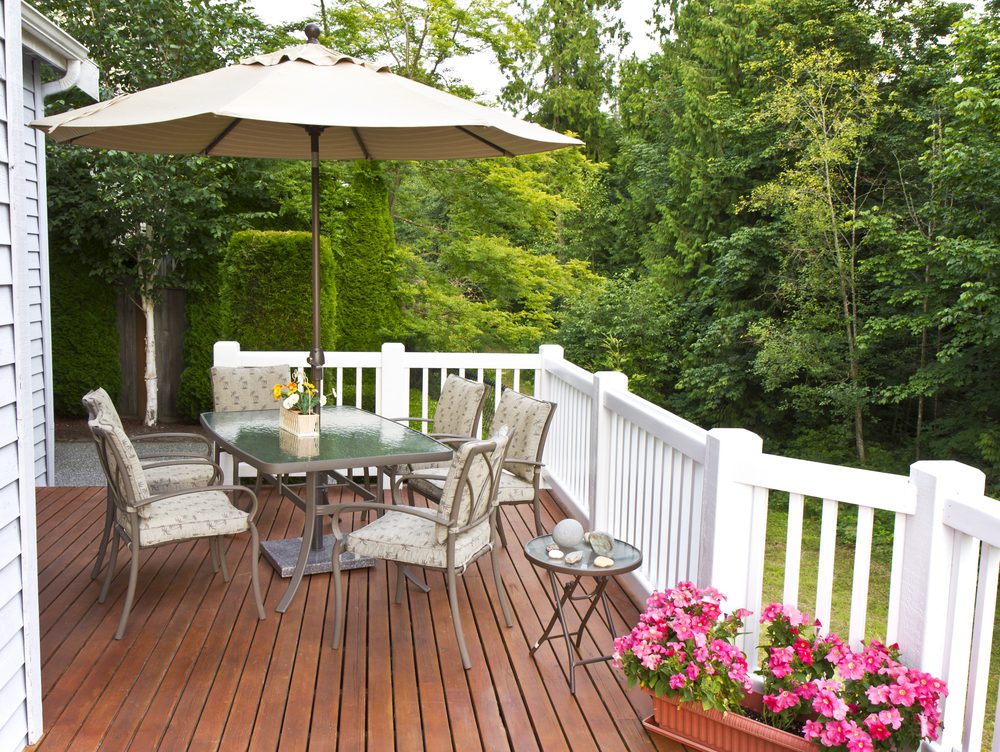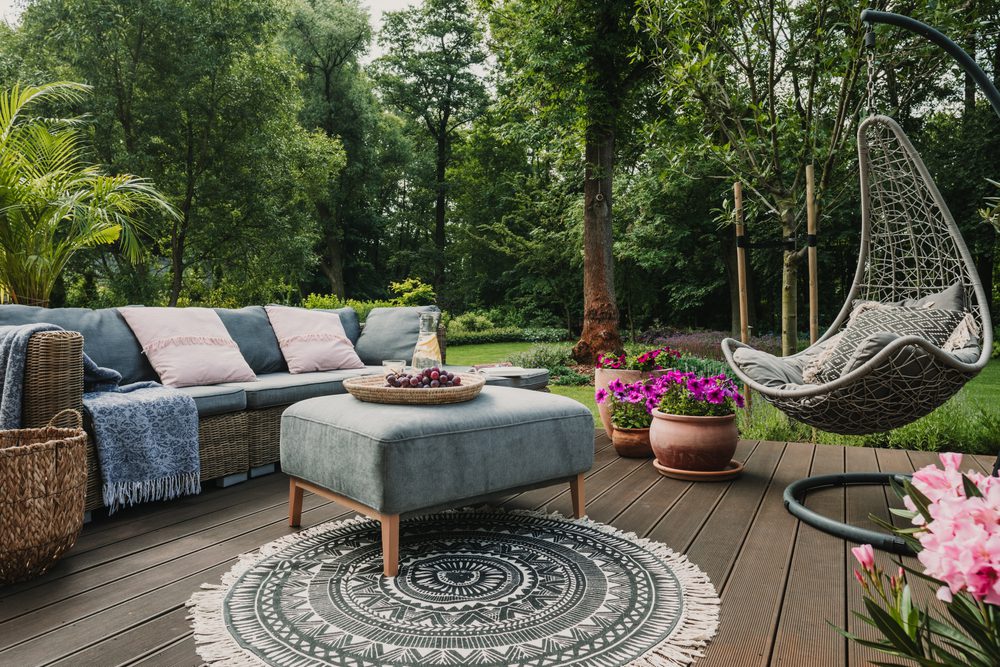Nobody likes sitting on a dusty patio chair or eating outdoors at a grimy table. Cleaning your patio furniture on a regular basis is essential to keep it in pristine condition. For a spotless, neat patio, you should clean your outdoor furniture at least four times a year: once when the summer ends, once when the summer begins, and several times in between.
High-quality outdoor furniture is designed to withstand the elements for years. But this doesn’t mean that some tender living care can’t help to stretch its useful life. Not only will your outdoor furniture last longer if you care for it, but it will also look great for a longer period of time.
Now, cleaning your outdoor furniture is not as simple as it sounds. You have to pay attention to the different types of material you have on your patio. However, once you understand and learn how to clean and care for outdoor pieces properly, this will become an easy-peasy household task for you.
We’ve searched for the right way to clean metal, wood, wicker, plastic, glass, and fabric furniture so you can have all the information in a single place! These cleaning techniques are guaranteed to bring new life into your outdoor furniture.
Before actually finding out the right tips for cleaning patio furniture, keep in mind that you should store it indoors during the winter months to avoid additional staining and weathering. You may also want to consult manufacturers’ manuals for the optimal care of your outdoor products.

How to Clean Wicker and Wood Outdoor Furniture
Restore dull, dusty wood or wicker furnishing using these simple cleaning methods. Mix some mild oil-based soap — Murphy Oil Soap is a great choice — with warm water and you’ll have a removing grime product. For a DIY alternative, mix 2 tablespoons of white vinegar with 1/4 cup ammonia and a quart of warm water.
You can also use commercial wood cleaners as they also do a great job, but make sure you read the directions carefully. For instance, some cleaning products may contain harsh chemicals that can damage the painted wood and wicker, so you may have to dilute the solution.
In order to protect your outdoor furniture, you should wipe down wood on a regular basis to remove debris, dirt, and excess water. When it comes to hardwood furniture, the optimal solution would be an annual sanding. For resurfacing outdoor furniture you’ll need a palm sander and sandpaper.
When sanding, ensure you’re moving the palm sander only in a back-and-forth motion following the wood grain. If you go against the grain you’ll create splinters and knick the material, which defeats the purpose of sanding.
Following the sanding process comes the surface treatment which is basically a fresh protective finish layer — it can be stain, oil, or polyurethane.
To keep the wicker in a good condition, make sure you hose it down every few weeks to avoid dirt buildup in crevices.
How to Clean Iron, Aluminium, and Metal Outdoor Furniture
Proper cleaning is a must to maintain the luster of outdoor metal furniture. When it comes to aluminum pieces, the most common issue is definitely oxidation. Before cleaning, use a 1:1 solution of water and vinegar or a metal polishing paste to get rid of as many of the stains as possible. Don’t try using chemicals such as trisodium phosphate (TSP) and ammonia — alkaline cleaners produce oxidation which can be worse than rust.
To maintain its natural luster:
- Wash aluminum furniture regularly and remove scuff marks using a soft cloth moistened with a non-abrasive cleaning solution.
- Keep rust at bay by sanding it off, making sure to remove the damaged paint too.
- Get rid of any metal residue using a cloth dampened with naphtha or mineral spirits.
- Go for a rust-resistant primer before painting any metal furniture with rust-resistant paint.
For further protection, have your wrought-iron furniture powder-coated or sandblasted. You can also apply a coat of automotive wax to protect it after cleanings.
When it comes to metal outdoor furniture, rust is definitely your biggest enemy. Being a type of corrosion that’s tough to clean, you must treat the metal surface with the right care without damaging your furniture.
In this context, an active corrosion spray turns out to be a great product to have in your cabinets, especially during the summer months when the heat and humidity levels are quite high. This kind of spray can also be purchased in colors offering high coverage.

How to Clean Glass Outdoor Furniture
A few basic cleaning steps will keep your glass patio tables shining. First of all, you should get rid of any stuck-on debris using a sponge or cloth and some non-abrasive, glass-safe cleanser. Many scrub brushes will harm glass by scratching it, so choose one meant to accomplish tough cleanup jobs without damaging your furnishings.
The most effective cleaners are dish detergent and household cleaning products. Once you’ve finished the initial cleaning, spray glass cleaner or even white vinegar on the surface. Wipe away the area with a paper towel or microfiber cloth. Don’t forget about the underside of your glass table; you should also wipe it down at least once a month to keep irreversible grime at bay. Glass table frames should be cleaned according to their material type.
Keeping some items on a glass table for a very long time may create lime deposits. If this happens, use a mild vinegar solution or a glass cleaner and a soft cloth to wipe off these deposits.
Cover your glass table when you’re not using it to keep the outdoor glass furniture clean. If necessary, use a glass repair kit to fix tiny scratches and cracks in the glass.
How to Clean Hard-Resin and Plastic Outdoor Furniture
Use these tips to get rid of built-up grime and stains on plastic patio tables and chairs:
- Make a DIY cleanser by mixing 1 gallon of warm water with 1/2 a box of baking soda.
- For stubborn stains, mix 1 gallon of warm water with 3 tablespoons of dishwasher detergent, which has a mild bleaching agent in its composition.
- For colored plastic, blend 1 quart of warm water with 1/4 cup vinegar.
Stay away from bleach and chlorine when cleaning white plastic furniture since they erode the material.
For tougher stains, dampen a clean cloth using white distilled vinegar and wipe down the surface. Another efficient option would be to sprinkle some baking soda on a wet sponge to make a mild abrasive that’s meant to remove stains without scratching surfaces. Avoid abrasive cleaning products, which will damage plastic outdoor furniture.
Once you’ve done with the washing process, protect your plastic furniture by applying a thin layer of automotive paste wax.

How to Clean Outdoor Fabric Furniture
Your outdoor furniture is definitely put through a lot. Not only is it exposed to dirt and dust and prone to fading from sunlight all day long but the patio furniture also faces danger from summertime BBQs. Basically, all it takes is dropping a hot dog with the ketchup side down, using a greasy sunscreen, or spilling a glass of red wine, and your once-wonderful patio furniture is covered in stains.
Here are a few cleaning tips for your outdoor fabric furniture:
- Don’t wait to remove spills and stains. Grab your cleaning product as soon as you notice a stain or spill. This way it won’t have enough time to seep into the fabric, so you’ll have better chances of removing it.
- Brush off any excess dirt before wetting the fabric. Avoid scrubbing the fabric without removing any caked-on, dried mess first. This technique will prevent stains to seep more into the fabric.
- Dip your sponge, scrub, or cloth into the cleaning solution. You should never pour it on as the excess moisture will soak into the cushion spreading the stain even more.
- Let the cleaning solution do its job. You want to ensure it has properly soaked into the fabric so that it can do its magic and remove the stain.
Keep in mind that most spills and stains on outdoor furniture can be cleaned up with water and dish soap, but there are also some stains that require special treatment. You can either mix 1/4 cup dishwashing liquid with 1/3 cup white vinegar and 1 gallon of water or go for some commercial cleaning solutions.
If you’re searching for garden inspiration ideas, you may also like this article: 8 Plants That Look Amazing Year-Round!